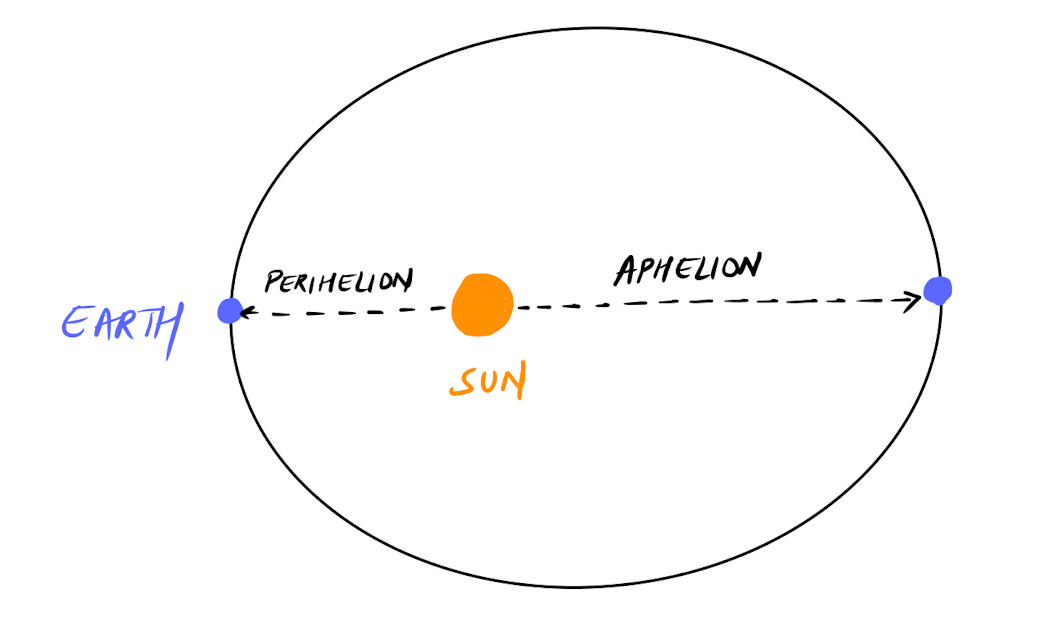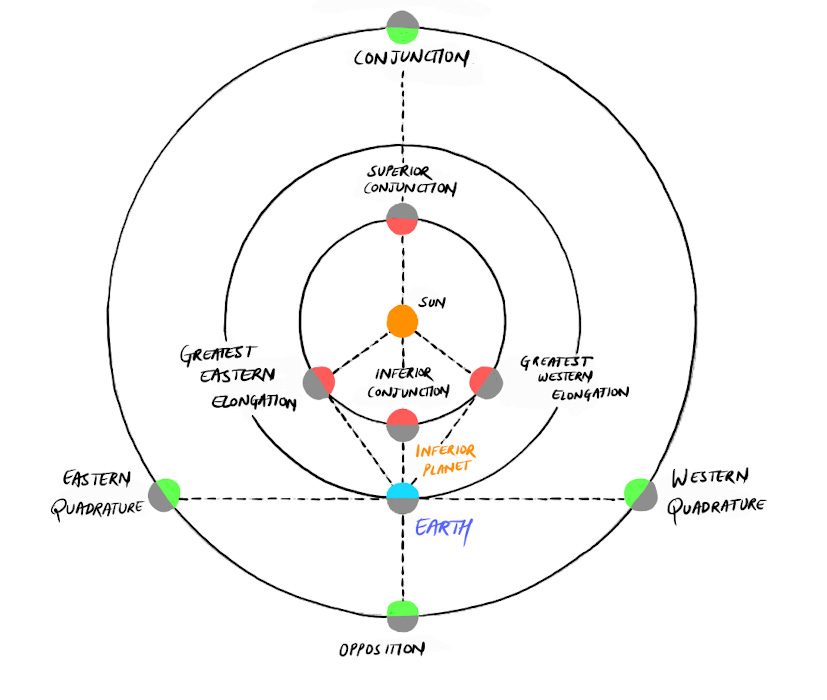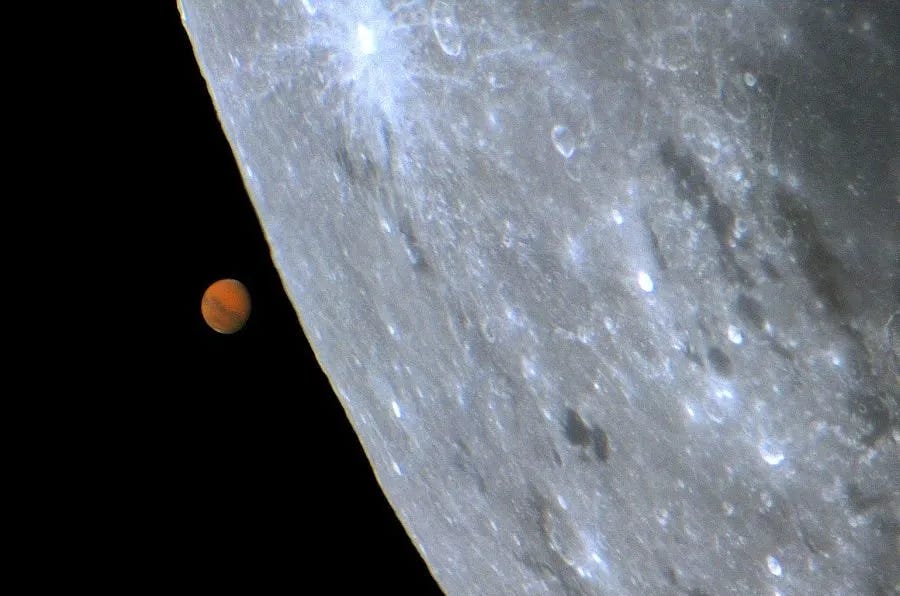As 2025 kicks off, the universe is rolling out some pretty cool shows for us. Meteor showers lighting up the sky, and other mind-blowing celestial events all year long.
I am putting together a simple guide to the most awesome cosmic happenings of 2025. You’ll learn why these events matter, when to step outside for the best view, and maybe even a little backstory about why they’re so special.
Perihelion (Jan 4)
Every year, Earth does this thing where it gets closer to the Sun for a bit. This moment, called perihelion, happens on January 4th. In 2025, it’s hitting the closest point at 13:00 UTC (7:00 a.m. CST). At that moment, we’re about 91.4 million miles (or 147.1 million kilometers) from the Sun, which is about 1.5 million miles closer than when we’re furthest away (aphelion).
When we’re at perihelion, the Sun is throwing about 7% more solar energy our way. But don’t expect the sky to look dramatically different. Earth is too far away for the Sun’s size to noticeably change.
Why the fancy name? It comes from Greek: “peri” means “near,” and “Helios” means “Sun.” Simple enough.
But being closer to the Sun doesn’t make it hotter. Seasons are all about the tilt of Earth’s axis. That’s why January is chilly up in the Northern Hemisphere, while down in places like Australia, they’re soaking up summer vibes.
Venus at Greatest Elongation East (Jan 10)
On January 10, Venus will be at its greatest elongation east. What does that mean? It’s when Venus is as far away from the Sun in the evening sky as it gets, making it easy to spot after sunset.
What’s “Elongation”?
Elongation is just how far a planet appears from the Sun in the sky. When Venus is at greatest elongation, it’s at its maximum separation from the Sun as seen from Earth. This makes it easier to see because it’s not lost in the Sun’s glare.
So, January 10 is your chance to see Venus at its best. Head outside, find a good view of the western sky, and enjoy the show!
Just a couple of hours after the Sun goes down, look west. In places some places, Venus will climb pretty high—around 40° above the horizon. That’s high enough to be hard to miss, even if there are some trees or buildings around.
The best part? Venus will be crazy bright—no telescope needed. Even with just your eyes, it’ll look stunning, like a diamond in the sky. But if you have binoculars, use them! You’ll get a sharper view, and you might even notice something cool: Venus will appear half-lit, like a tiny, glowing "half-moon."
Wolf Moon and Mars at Opposition (Jan 13-16)
On January 13, the Wolf Moon—the first full moon of the year—rises in all its glory at 22:27 GMT. But that’s not all. On the same night, something rare and stunning will happen: the Moon will pass directly in front of Mars. For those in North America, you’ll get to see Mars disappear and then reappear from behind the Moon.
Fast forward a couple of days to January 15-16, and Mars hits opposition. That’s when Earth is perfectly aligned between Mars and the Sun, making Mars shine bigger and brighter than usual. Think of it as Mars’ big moment to dazzle.
When and Where to Look
January 13: Look up after sunset to see the Wolf Moon in the constellation Gemini. If you’re in North America, you’ll also catch the lunar occultation of Mars, a sight that doesn’t come around often.
January 15-16: Mars will be its closest and brightest, easy to spot with the naked eye.
For the best views, head somewhere dark, away from city lights. A telescope or binoculars will make it even more spectacular, but honestly, just lying back and looking up works too.
The term Wolf Moon comes from olden times when people noticed wolves howling more during the cold, dark January nights. It’s a reminder of how deeply nature used to shape our lives—and still does if we take a moment to notice.
Mars oppositions happen about every two years, and they’re a big deal for astronomers. When Mars is close to Earth like this, we can study its surface details, dust storms, and even its icy poles more clearly. Who knows? Maybe this time it’ll spark new discoveries.
When Saturn’s Rings Vanish..Almost (March)
Every 13 to 16 years, Saturn’s rings seem to pull a magic trick—they disappear. Well, not really. What happens is that Earth lines up with the plane of Saturn’s rings. Since the rings are incredibly thin, only about 30-300 feet thick (that’s thinner than most buildings are tall!), they appear edge-on from our perspective. So they look like they’ve vanished.
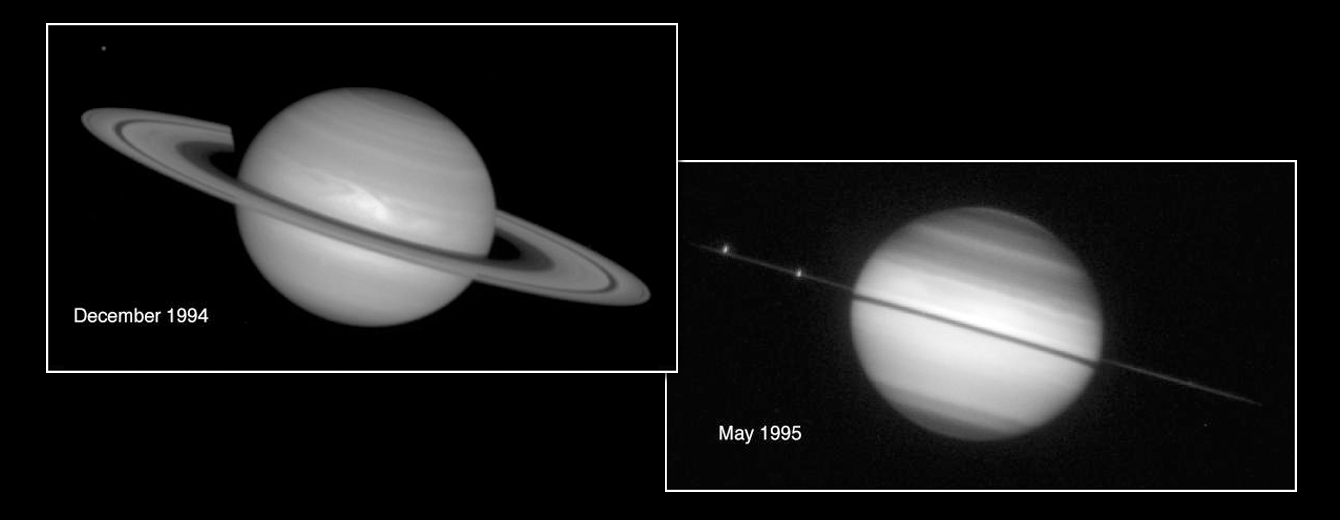
It’s a trick of perspective, but it’s no less stunning. This rare alignment, called a ring plane crossing, is coming up in March 2025. If you’ve got a telescope, now’s the time to get serious about watching Saturn. The rings are already appearing slimmer as they tilt more edge-on toward us. Soon, they’ll be nearly invisible.
The ring plane crossing is rare. Next it will happen around 13-15 years from now…
Total Lunar Eclipse (March 13-14)
A total lunar eclipse is one of nature's coolest light shows. The Earth slides perfectly between the Sun and the Moon, casting its shadow onto the Moon. This blocks out direct sunlight, and the Moon gets painted a reddish glow—what people call a "Blood Moon."
Best Way to Watch It
If you want the best view, find a dark spot far from city lights. The darker the sky, the more vivid the eclipse looks, and you’ll even catch more stars around it.
For people in the eastern half of North America, the peak happens after midnight on March 14. If you’re in the western half, the best time is just before midnight on March 13.
Here’s the schedule for Mountain Daylight Time (MT):
9:57 PM, March 13: The Moon enters Earth's outer shadow (penumbral phase). It’s subtle but marks the start.
10:57 PM: The partial eclipse begins—this is when you really start to notice something.
12:30 AM, March 14: Total eclipse kicks in. The Moon turns red.
4:00 AM: The show’s over as the Moon leaves the shadow.
Set a reminder, grab a blanket, and maybe a pair of binoculars. It’s free and it’s beautiful.
Lyrid Meteor Shower: April 22-23
This year, it peaks on the night of April 22. That’s when you’ll see 10 to 15 meteors an hour if the skies are clear and you’re in a dark spot. The show runs from April 16 to 29, but the peak is the real treat.
When and How to Watch
The best time to look up is after midnight on April 22, when the meteors’ starting point—the radiant in the Lyra constellation—is highest in the sky. Here’s how to make the most of it:
Find a spot away from city lights. The darker, the better.
Give your eyes 30-40 minutes to adjust to the dark. No peeking at your phone!
Bring a blanket or a reclining chair. You want to be comfortable while looking straight up.
Dress warmly, because clear nights can get chilly.
History
The Lyrids are one of the oldest meteor showers we know about. Ancient Chinese astronomers were writing about them way back in 687 BCE, describing the meteors as “falling like rain.” There’s something cool about knowing people thousands of years ago were just as captivated by the night sky as we are today.
Mercury at Its Best
Twice this year, Mercury will be as far from the Sun as it ever gets in our sky. These moments, called "greatest elongation," are your best chances to see this elusive little planet without it being lost in the Sun’s glare.
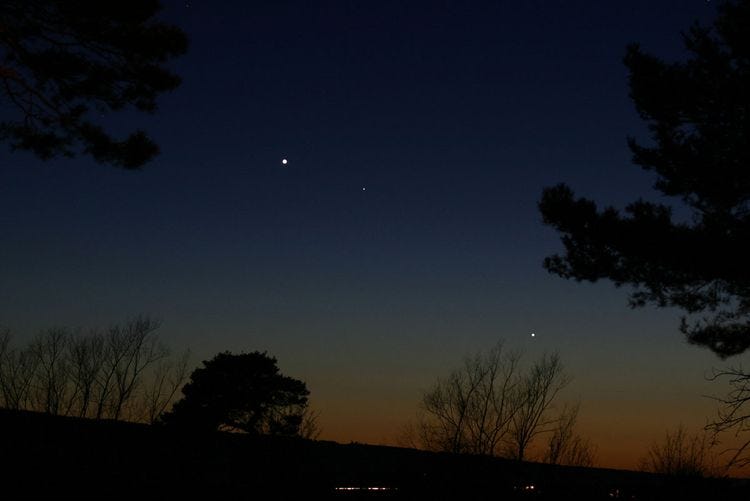
When and How to See Mercury
April 21 (Evening):
Right after sunset, look to the west. As the sky darkens, Mercury will pop out just above the horizon. This is one of the best times of the year to spot it because spring’s tilt gives Mercury a little extra height in the sky.
October 29 (Morning):
Set your alarm for about 40 minutes before sunrise. Look east, where Mercury will shine just ahead of the Sun as the sky starts to brighten. It’s a peaceful, early-morning show worth waking up for.
Mercury isn’t always easy to find, but these dates make it doable. Take a few minutes to step outside and see it for yourself.
The Orionid Meteor Shower: Oct 21-22, 2025
This October, something amazing is happening in the sky—the Orionid meteor shower. It’s set to peak early on the morning of October 21, and there’s a bonus: the new moon falls on the same night. No moonlight means the sky will be darker, which makes it perfect for spotting meteors.
Where to Look and How to Watch
The meteors will seem to shoot out from the constellation Orion (look for the famous "belt"), but they can streak across any part of the sky. Give your eyes about 20 minutes to adjust to the darkness—this makes all the difference. If you need light, use something with a red glow to avoid ruining your night vision.
Just lie back, relax, and let the show come to you.
Keep reading with a 7-day free trial
Subscribe to Science Sundays to keep reading this post and get 7 days of free access to the full post archives.




